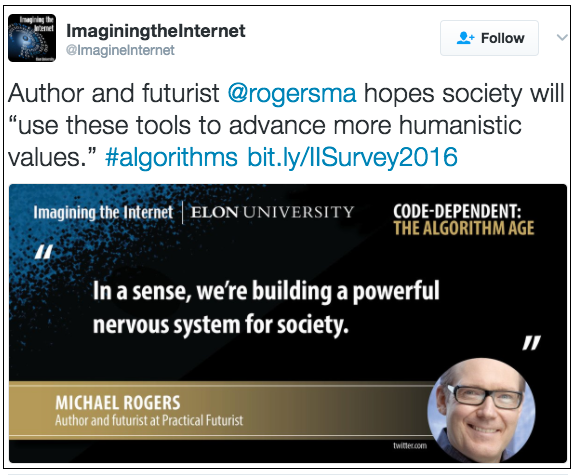When the Computer is Watching...
I recently helped with a research paper on the future of “algorithms”--a once-techy term that now generically refers to computer software that uses rules to make decisions. Software, for example, that takes complex data like your financial information and then generates a credit score. Algorithms now do everything from pricing airline tickets in real time to perfecting long-term weather forecasts.
 The basic question of the research was simple: is the increasing use of algorithms to manage society good or bad? As with almost any technology, the answer, of course, is both--but for the most part algorithms are invisible.
The basic question of the research was simple: is the increasing use of algorithms to manage society good or bad? As with almost any technology, the answer, of course, is both--but for the most part algorithms are invisible.
There’s one technique, however, that I think will attract increasing attention: the combination of smart algorithms with computer vision.
Video surveillance cameras, for example, in airport parking lots, can now be connected to smart algorithms to analyze movement. They can tell the difference between a traveler returning to their car and someone who is casing vehicles for smash-and-grab thefts. In the latter case, the software will alert a human security guard who comes out to check the situation. The system never dozes off or gets bored or distracted. It’s always watching.
So too are the cameras in a recent retail store application, where the security cameras observe not only the customers, but the employees as well. Using facial recognition, the cameras track every interaction each sales clerk has with the public.
At the end of the day, algorithms produce a report on just how the clerk performed--did they ignore customers? Were they shy about approaching people? How did their behavior relate to the sales they rang up on the register?
As the creators of the system put it, the report give managers the opportunity of a “teachable moment” with each employee at the end of the day.
Or maybe it’s more of a threatening moment.

